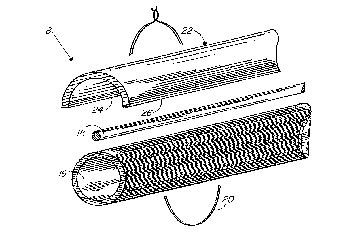Une partie des informations de ce site Web a été fournie par des sources externes. Le gouvernement du Canada n'assume aucune responsabilité concernant la précision, l'actualité ou la fiabilité des informations fournies par les sources externes. Les utilisateurs qui désirent employer cette information devraient consulter directement la source des informations. Le contenu fourni par les sources externes n'est pas assujetti aux exigences sur les langues officielles, la protection des renseignements personnels et l'accessibilité.
L'apparition de différences dans le texte et l'image des Revendications et de l'Abrégé dépend du moment auquel le document est publié. Les textes des Revendications et de l'Abrégé sont affichés :
| (12) Brevet: | (11) CA 1323986 |
|---|---|
| (21) Numéro de la demande: | 1323986 |
| (54) Titre français: | DISPOSITIF DE COLLECTE DE SEVE |
| (54) Titre anglais: | SAP COLLECTING DEVICE |
| Statut: | Périmé et au-delà du délai pour l’annulation |
| (51) Classification internationale des brevets (CIB): |
|
|---|---|
| (72) Inventeurs : |
|
| (73) Titulaires : |
|
| (71) Demandeurs : |
|
| (74) Agent: | LAVERY, DE BILLY, LLP |
| (74) Co-agent: | |
| (45) Délivré: | 1993-11-09 |
| (22) Date de dépôt: | 1989-09-28 |
| Licence disponible: | S.O. |
| Cédé au domaine public: | S.O. |
| (25) Langue des documents déposés: | Anglais |
| Traité de coopération en matière de brevets (PCT): | Non |
|---|
| (30) Données de priorité de la demande: | S.O. |
|---|
ABSTRACT OF THE DISCLOSURE
The disclosure herein describes a device for
use in conducting sap collected from maple trees to a
sap-processing unit, particularly during sunny days; it
comprises a tubular member in which sap is contained
and conveyed to the sap-processing unit and a parasol
mounted exteriorly of the tubular member for preventing
high angled sun rays to be absorbed in the tubular
member and to affect the sap flowing during the day but
allowing low angled sun rays to be absorbed in part of
the tubular member to allow frozen sap to defreeze and
flow in the morning. The parasol consists of a semi-
cylindrical elongated member mounted over the tubular
member and is spaced therefore so as to define an air
chamber between the tubular member and the semi-
cylindrical member.
Note : Les revendications sont présentées dans la langue officielle dans laquelle elles ont été soumises.
Note : Les descriptions sont présentées dans la langue officielle dans laquelle elles ont été soumises.

2024-08-01 : Dans le cadre de la transition vers les Brevets de nouvelle génération (BNG), la base de données sur les brevets canadiens (BDBC) contient désormais un Historique d'événement plus détaillé, qui reproduit le Journal des événements de notre nouvelle solution interne.
Veuillez noter que les événements débutant par « Inactive : » se réfèrent à des événements qui ne sont plus utilisés dans notre nouvelle solution interne.
Pour une meilleure compréhension de l'état de la demande ou brevet qui figure sur cette page, la rubrique Mise en garde , et les descriptions de Brevet , Historique d'événement , Taxes périodiques et Historique des paiements devraient être consultées.
| Description | Date |
|---|---|
| Le délai pour l'annulation est expiré | 2005-11-09 |
| Lettre envoyée | 2004-11-09 |
| Accordé par délivrance | 1993-11-09 |
Il n'y a pas d'historique d'abandonnement
| Type de taxes | Anniversaire | Échéance | Date payée |
|---|---|---|---|
| TM (catégorie 1, 4e anniv.) - générale | 1997-11-10 | 1997-09-22 | |
| TM (catégorie 1, 5e anniv.) - générale | 1998-11-09 | 1998-10-06 | |
| TM (catégorie 1, 6e anniv.) - générale | 1999-11-09 | 1999-11-02 | |
| TM (catégorie 1, 7e anniv.) - générale | 2000-11-09 | 2000-10-26 | |
| TM (catégorie 1, 8e anniv.) - générale | 2001-11-09 | 2001-09-04 | |
| TM (catégorie 1, 9e anniv.) - générale | 2002-11-11 | 2002-10-09 | |
| TM (catégorie 1, 10e anniv.) - générale | 2003-11-10 | 2003-11-07 |
Les titulaires actuels et antérieures au dossier sont affichés en ordre alphabétique.
| Titulaires actuels au dossier |
|---|
| IPL INC. |
| Titulaires antérieures au dossier |
|---|
| JEAN-MARIE CHABOT |